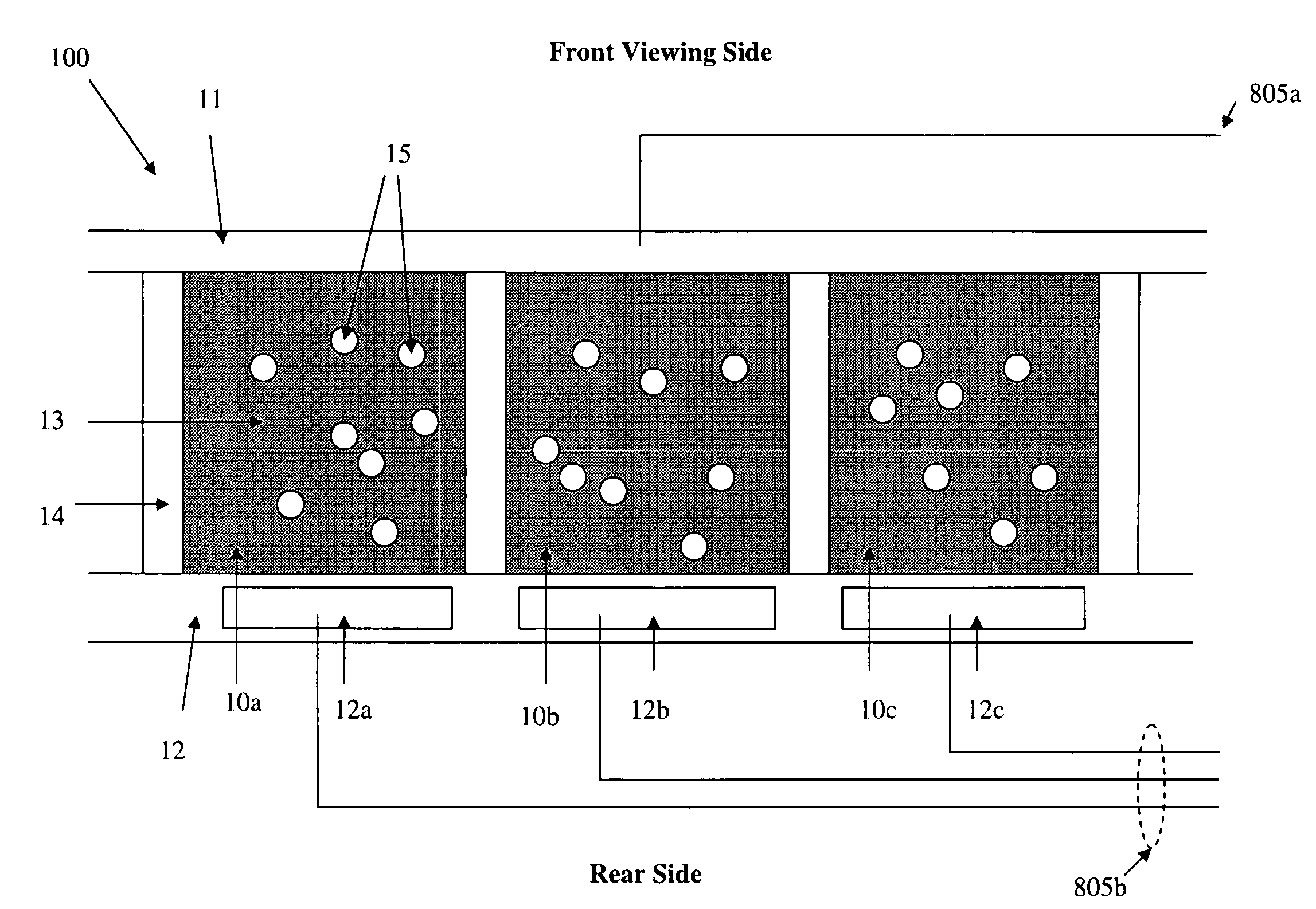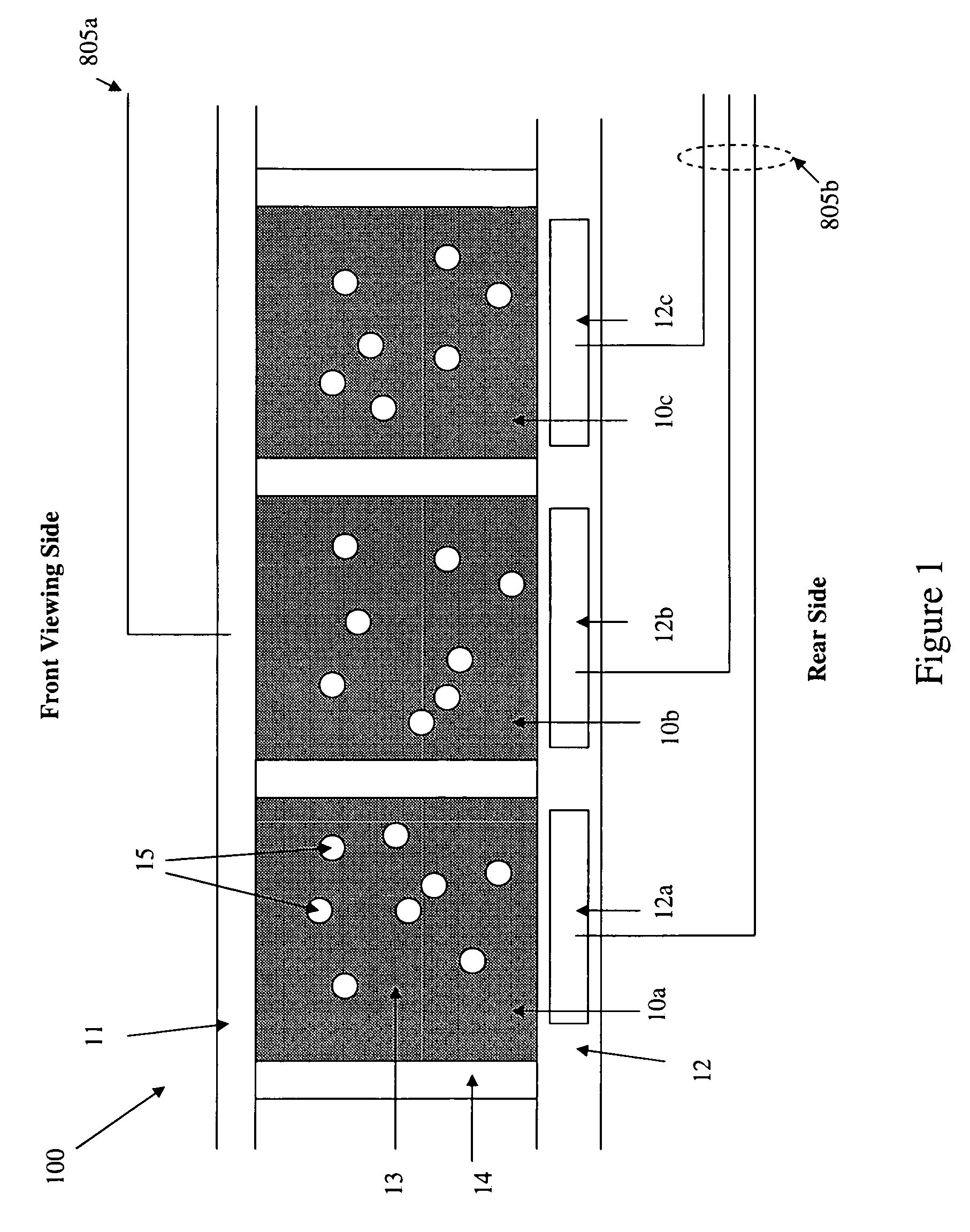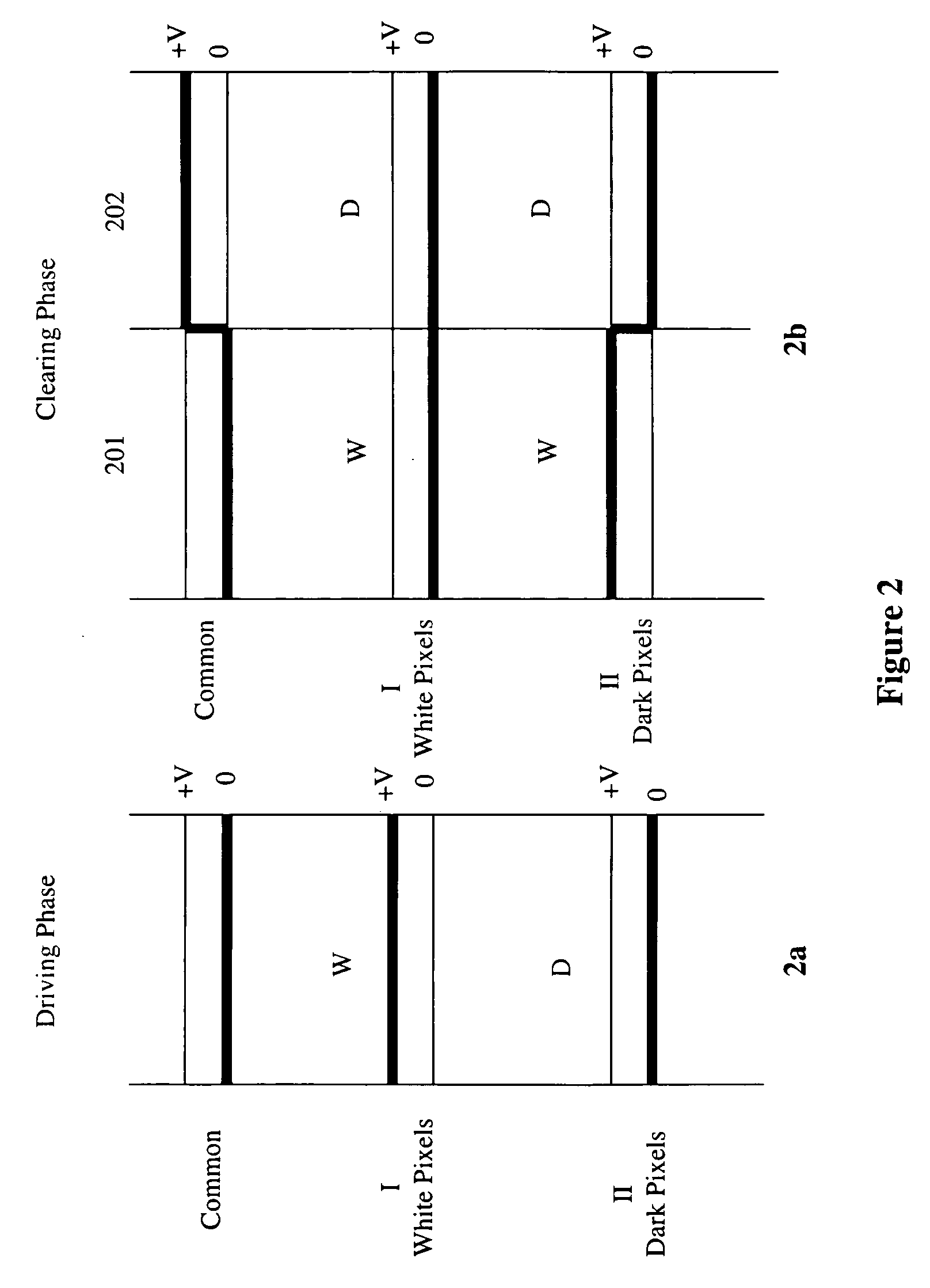Driving methods and circuit for bi-stable displays
a technology of bi-stable displays and driving methods, applied in the direction of instruments, static indicating devices, etc., can solve the problems of long-term image uniformity, approaches provide a practical solution, etc., and achieve the effect of optimal image quality and fast and most pleasing appearan
- Summary
- Abstract
- Description
- Claims
- Application Information
AI Technical Summary
Benefits of technology
Problems solved by technology
Method used
Image
Examples
example 1
One Time Display Implementation
[0058]In this example, some of the images would be displayed on the electrophoretic display 100 only once. For one time display implementations, the displayed image on the electrophoretic display 100 is to be turned off or cleared after a pre-determined display period, for example, a one time password used in a smartcard application. After the onetime password is generated and displayed, the password image should be cleared for security reasons. In this implementation, the electrophoretic display 100 will be driven to the dark state and then wait for the next driving sequence.
[0059]FIG. 2 illustrates one of the onetime display driving embodiments. In this embodiment, the initial color state or the “off” state of the electrophoretic display 100 is represented by the dark color state of the electrophoretic fluid 13 (display medium.) As depicted, the driving implementation has two phases, a driving phase and a clearing phase. The driving phase is shown in...
example 2
Alternative One Time Display Implementation
[0063]Experience has shown that if an electrophoretic display remains inactive for an extended period of time, the performance of transitioning from the dark state to the white state or vice versa may become degraded, and the dark state may have assumed a less than optimal charge value. FIG. 3 illustrates an alternative driving phase to that in FIG. 2 to address this issue. As shown in the FIG. 3, the driving phase in this alternative implementation has two driving frames, 301 and 302. For the common electrode 11 (FIG. 1) in this driving implementation, no voltage potential is applied in driving frame 301 and a voltage potential of +V is applied in driving frame 302. Waveform I drives pixels from the dark “off” state to the white state by applying across the display medium 13 a voltage potential of +V in frame 301 and no voltage potential in frame 302 and as a result, the pixels switch to the white state in frame 301 and remain in the white...
example 3
Multiple Message Display Implementation
[0065]An electrophoretic display may display multiple images sequentially. The multiple messages may be shown in sequence within a short period of time (e.g., 1-2 minutes) and the final message may remain for a longer period of time unless cleared or corrected. The multiple messages may be displayed one after another or the multiple messages may be a repeat of two or more messages, switching back and forth as driven by a microcontroller 800 (FIG. 8)
[0066]FIG. 4 depicts an example as to how multiple messages may be displayed in succession. In the sequence as shown, the “idle” time between messages is optional. The final message in the sequence may remain for a period of time, if needed. A corrective waveform may be applied between messages (not shown) or after the second message has been displayed to drive the white pixels to the dark state and provide DC balancing as briefly discussed above and discussed in more detail with respect to FIG. 5 be...
PUM
 Login to View More
Login to View More Abstract
Description
Claims
Application Information
 Login to View More
Login to View More - R&D
- Intellectual Property
- Life Sciences
- Materials
- Tech Scout
- Unparalleled Data Quality
- Higher Quality Content
- 60% Fewer Hallucinations
Browse by: Latest US Patents, China's latest patents, Technical Efficacy Thesaurus, Application Domain, Technology Topic, Popular Technical Reports.
© 2025 PatSnap. All rights reserved.Legal|Privacy policy|Modern Slavery Act Transparency Statement|Sitemap|About US| Contact US: help@patsnap.com



